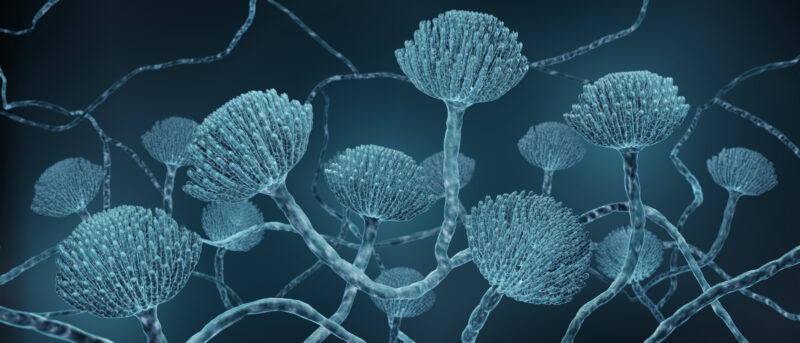These minuscule entities function almost like social media for cells, facilitating communication between cells and sharing the body’s secrets. “As a scientist working with extracellular vesicles, I refer to exosomes as the social media of cells.” Yes, indeed, these small structures genuinely act as a platform where cells communicate with each other and exchange information. But what exactly is this intriguing subject that has everyone’s attention?
What are they?
Technically speaking, exosomes are nano-sized bio-vesicles that transport between cells. These vesicles enable cell-to-cell communication, mediating the transfer of genetic material, proteins, and other molecules. Through this process, information is exchanged between cells, enhancing the overall functionality of the body. Exosomes serve as the communication language between cells in this social media network.
Unlike other intercellular vesicles, exosomes can be obtained from various body fluids and isolated from nearly every living organism, making them particularly useful in diverse scientific studies.
The limitations of previous isolation, imaging, and characterization methods are one of the main reasons for the increased interest in exosomes in recent years. The scientific community is intensely working to unravel and better understand the mysteries of these small structures.
Used in various fields, particularly in regenerative medicine, exosomes aid in disease treatment and diagnosis, serve as carriers of genes and drugs, understanding cell behaviors, and resolving many scientific inquiries. The surge in exosome studies signifies a period of better comprehension of their nature and compatibility with biological systems, expanding their areas of application. While ethical issues may arise depending on the cell type they originate from, exosomes derived from stem cells hold promise, especially in cosmetic applications.

Effective in the medical, mesotherapy, and cosmetic World!
Now, let’s take a look at some advantages of using exosomes in medicine, mesotherapy, and cosmetics.
Cellular Communication and Repair: Exosomes can aid in repairing damaged tissues by facilitating interactions between cells. These structures can accelerate the renewal process in damaged areas by communicating with healthy cells.
Therapeutic Use: Exosomes can be used as carriers in disease treatments, especially in regenerative medicine, offering hope in disease treatments.
Transport of Bioactive Molecules: These small structures can modulate cellular functions via their genetic material, proteins, and other molecules, regulating intercellular communication by transporting bioactive components.
Effectiveness in Cosmetic Applications: Exosomes have cosmetic uses such as skin whitening, wrinkle reduction, and preventing sagging. Exosomes derived from mesenchymal stem cells can be particularly useful in skin rejuvenation and renewal.
Cellular Rejuvenation and Anti-Aging Effects: Exosomes may trigger cell renewal, reducing cellular aging and possessing anti-aging properties. Through intercellular interactions, these structures may have rejuvenating effects.
Finally, let’s conclude by defining them as a “guide to understanding cells,” highlighting that while these miraculous structures hold many mysteries in the realm of science, their potential discovered so far sheds light on the future scientific world.
References
Chaudhary, S., Madan, A., Bhunia, B., & Arora, D. (2023). Isolation, Characterization, and Detailed History of Exosomes Derived from Stem Cells and their Epigenetic Biology. In Applications of Stem Cells and derived Exosomes in Neurodegenerative Disorders(pp. 139-168). Singapore: Springer Nature Singapore.
Bazzan, E., Tinè, M., Casara, A., Biondini, D., Semenzato, U., Cocconcelli, E., … & Cosio, M. G. (2021). Critical review of the evolution of extracellular vesicles’ knowledge: From 1946 to today. International Journal of Molecular Sciences, 22(12), 6417.
Zhang, Y., Bi, J., Huang, J., Tang, Y., Du, S., & Li, P. (2020). Exosome: a review of its classification, isolation techniques, storage, diagnostic and targeted therapy applications. International journal of nanomedicine, 6917-6934.
Zocchi, M. L., Vindigni, V., Pagani, A., Pirro, O., Conti, G., Sbarbati, A., & Bassetto, F. (2019). Regulatory, ethical, and technical considerations on regenerative technologies and adipose-derived mesenchymal stem cells. European Journal of Plastic Surgery, 42, 531-548.
Wan, R., Hussain, A., Behfar, A., Moran, S. L., & Zhao, C. (2022). The therapeutic potential of exosomes in soft tissue repair and regeneration. International journal of molecular sciences, 23(7), 3869.
Rezabakhsh, A., Sokullu, E., & Rahbarghazi, R. (2021). Applications, challenges and prospects of mesenchymal stem cell exosomes in regenerative medicine. Stem Cell Research & Therapy, 12, 1-8.
Simeone, P., Bologna, G., Lanuti, P., Pierdomenico, L., Guagnano, M. T., Pieragostino, D., … & Mariani-Costantini, R. (2020). Extracellular vesicles as signaling mediators and disease biomarkers across biological barriers. International journal of molecular sciences, 21(7), 2514.
Kee, L. T., Ng, C. Y., Al-Masawa, M. E., Foo, J. B., How, C. W., Ng, M. H., & Law, J. X. (2022). Extracellular vesicles in facial aesthetics: A review. International Journal of Molecular Sciences, 23(12), 6742.
Wu, J. Y., Wu, S. N., Zhang, L. P., Zhao, X. S., Li, Y., Yang, Q. Y., … & Zhu, N. W. (2022). Stem cell-derived exosomes: a new method for reversing skin aging. Tissue Engineering and Regenerative Medicine, 19(5), 961-968.





